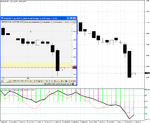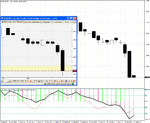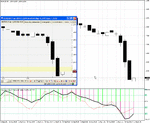Hi all,
I am currently testing VT Trader which gets it data from CMS and MetaTrader 4 where the data comes from FXDD I think on demo accounts.
Please look at the attached charts.
While MT4 ticks a few times each sec, VT Trader always stalls and jumps a few pips at once a little bit later.
Also the CCI looks completely different. I doublechecked the settings which are similar.
Anyone with same experiences?
Thanks
Tom
I am currently testing VT Trader which gets it data from CMS and MetaTrader 4 where the data comes from FXDD I think on demo accounts.
Please look at the attached charts.
While MT4 ticks a few times each sec, VT Trader always stalls and jumps a few pips at once a little bit later.
Also the CCI looks completely different. I doublechecked the settings which are similar.
Anyone with same experiences?
Thanks
Tom




